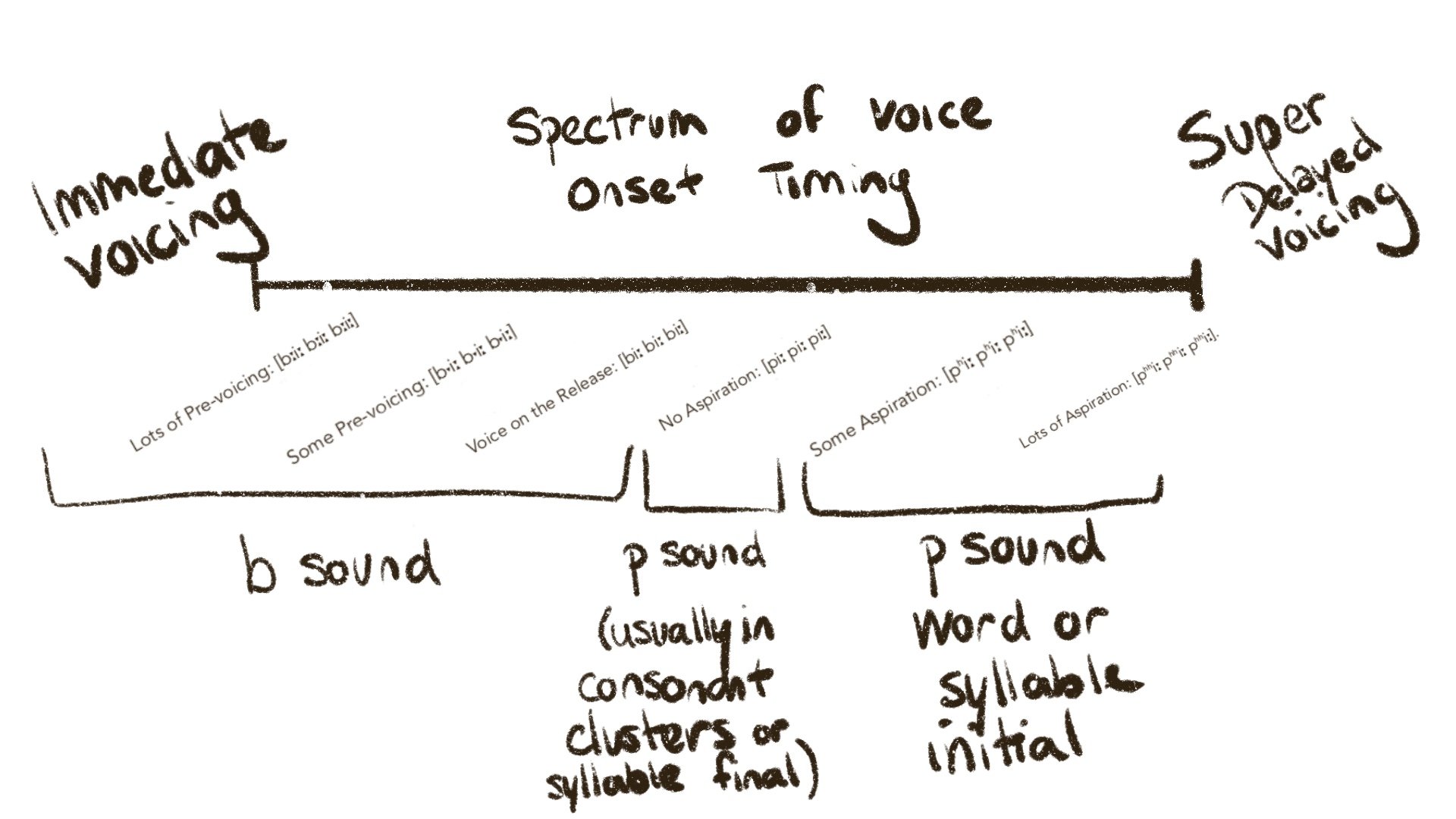The P-sound
So now we know the different articulators and their places of articulation (bilabial, labiodental, alveolar, post-alveolar, palatal, glottal). We've also talked about the different manners of articulation (stop/plosive, nasals, fricative, affricate, glides, liquids). Now we can talk about the individual sounds to start connecting the dots.
THE SOUND
Starting with the P-sound.
Now it's important to recognize that I am referring to the P-sound, NOT NECESSARILY the P-letter.
Phone and Poll both have a P-letter but only one has a P-sound.
So again, remember, everything we are referring to is related to the P-sound.
THE SOUND IN DIFFERENT POSITIONS.
So, here's the sound in different positions of a word.
BEGINNING OF THE WORD - pig, pet, peter, pan, pond, pen
MIDDLE OF THE WORD - open, happy, topple, eggplant
END OF THE WORD - map, beep, top, sleep
SITUATIONS THAT SEEM LIKE THE SOUND BUT AREN'T
(Because it is the P-letter, NOT the P-sound)
photograph, graph, graphic, pterodactyl,
WHY IT MAY BE HARD TO PRONOUNCE THE SOUND
It shouldn't be a hard sound for most people. Most languages in the world have either a P or B sound which are good archetypal sounds to understand the concept of a stop. However, your first language may not.
So if you don't have a P-sound OR a B-sound, there's a steeper learning curve
WHAT TO DO
So let's say you do have trouble with your P-sound. What can you do about it.
Well here are the features of the P-sound.
Place of articulation - lips (so pay attention to your upper and lower lips. They should touch and firm tension should be felt in your upper and lower lips)
Manner of articulation - plosive or stop (there is a complete obstruction of airflow and then an audible release as air can then escape)
Voiced or unvoiced - unvoiced (this means the vocal cords do not vibrate while producing the P-sound)
To create the /p/, air is briefly prevented from leaving the vocal tract by closing the lips. The vocal cords don't vibrate so when you feel your neck while you make the P-sound, it won't buzz.
TIPS & EXTRA CONSIDERATIONS
1. Try starting out with the foundation of the B-sound if you are more comfortable making a B-sound.
Why?
Because the B-sound is the exact same manner of articulation (plosive/stop) and the exact same place of articulation (the lips). The only difference is that the P sound has no vocal cord vibration and the B sound does.
2. Aspiration - Part 1
With the P sound, there is a slight difference in the pronunciation when the P-sound is at the beginning of a syllable or word versus when it is the second or third letter of a syllable or word.
For example, PIE and SPY.
The difference is something called aspiration and it's an audible difference in the sound characterized by a strong burst of breath at the release of the sound. If you put your hand up to your mouth or put a tissue in front of your mouth, when you say the words PIE and SPY, you should feel the breath or see the tissue be pushed forward during PIE and not with SPY. This is the aspirated sound.
So:
I would pronounce PIE with an aspirated P-sound.
I would pronounce SPY with an unaspirated P-sound.
It is important to realize there is no meaningful difference between an aspirated P and unaspirated P. This means that a listener wouldn't accidentally hear a different word or misinterpret it for another sound. The only thing they might notice is that something about the pronunciation was different, but they would still understand it the same.
It is important to recognize the weight of the differences in pronunciation and how much those differences are meaningful differences to understanding or how little those differences are. To an actor who is trying to portray a character with a specific background, a mispronunciation may impact their portrayal of the character and pull the audience out of the performance, but for a CEO or public speaker giving a talk, it doesn't make their talk any less heard or understood.
Aspiration - Part 2
This concept of unaspirated P-sounds also applies at the end of words. In the general North American English accent (which I refer to to group together a General American English Accent and a General Canadian English Accent), in syllable-final position the P-sound is typically realized as an unreleased stop. What I mean by this is at the ends of words (like in CAP, BEEP, TAPE) or at the ends of syllables (like in CAPTURE and POPULAR)

